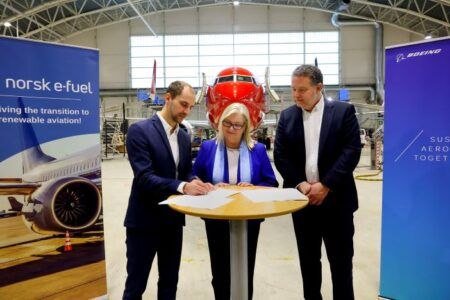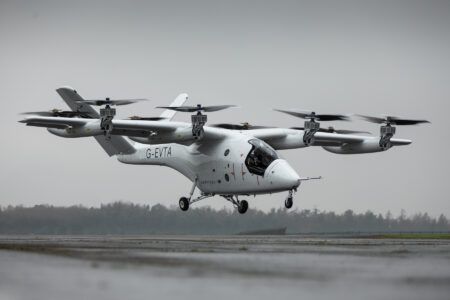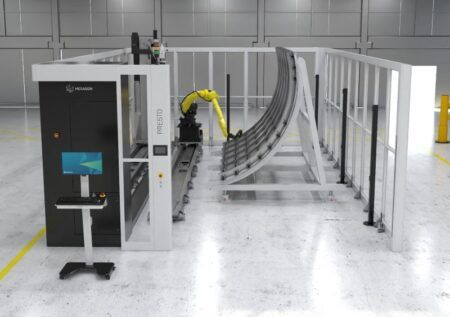Airbus and Autodesk’s design studio have collaboratively engineered and produced the largest ever metal 3D-printed component for a commercial aircraft using Scalmalloy metal, a new super-strength alloy with the lightness of aluminum and strength of titanium. Scandium, a rare earth additive, gives the alloy its strength and performance.
The cabin partition is a dividing wall between the seating area and the galley of a plane, and holds the jumpseat for the cabin attendants as well as separating the passenger cabin of an A320 from the rear galley.
The ‘bionic partition’ was created with custom algorithms which generated a design that mimics cellular structure and bone growth. The resulting design was then produced using additive manufacturing techniques in sintered metal which gives a stronger and lighter weight structure than is possible using traditional processes. The resulting replacement is a stronger partition compared with the current model and saves 55 lb (25kg) in weight.
In the aerospace industry, 3D printing is usually used for small parts and especially those with complex shapes. The 3D-printed partition is assembled from 122 parts that have been printed in seven batches. The finished assembly uses a mixture of materials including Scalmalloy, aluminum and magnesium.
The first phase of testing has been successfully completed, with further testing to be conducted next year, including a test flight. If the partition passes a final test in January 2016, it will be installed in every new A320 from then on.
December 3, 2015




